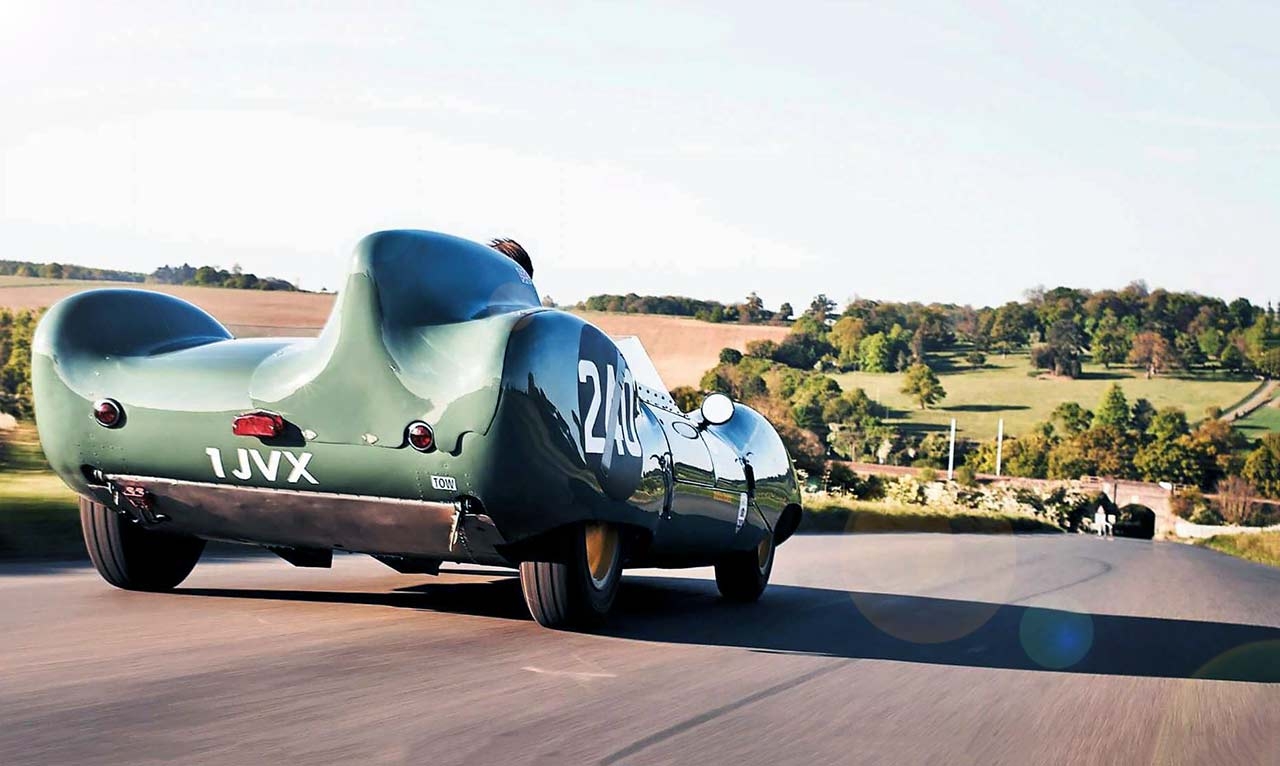
11 Heaven The ex-Alan Stacey Lotus XI bursts from the racetrack for an intense, invigorating road blast – hold on tight. Holding on tight in one of the last road-legal sports-racers – Alan Stacey’s Lotus XI. Despite having only one leg, Alan Stacey rose to motor racing stardom using a healthy dose of determination – and his trusty Lotus Eleven team car. Six decades on, we drive it. Words Ivan Ostroff. Photography Gus Gregory.
My first contact with 1 JVX sends a pang of guilt straight through me. This is the Lotus Eleven team car that the late Alan Stacey used to win twice at Goodwood in 1957, yet here I am clumsily swinging a leg over the haunch of the offside rear wing and standing, with much regret, on the red leather driver’s seat.
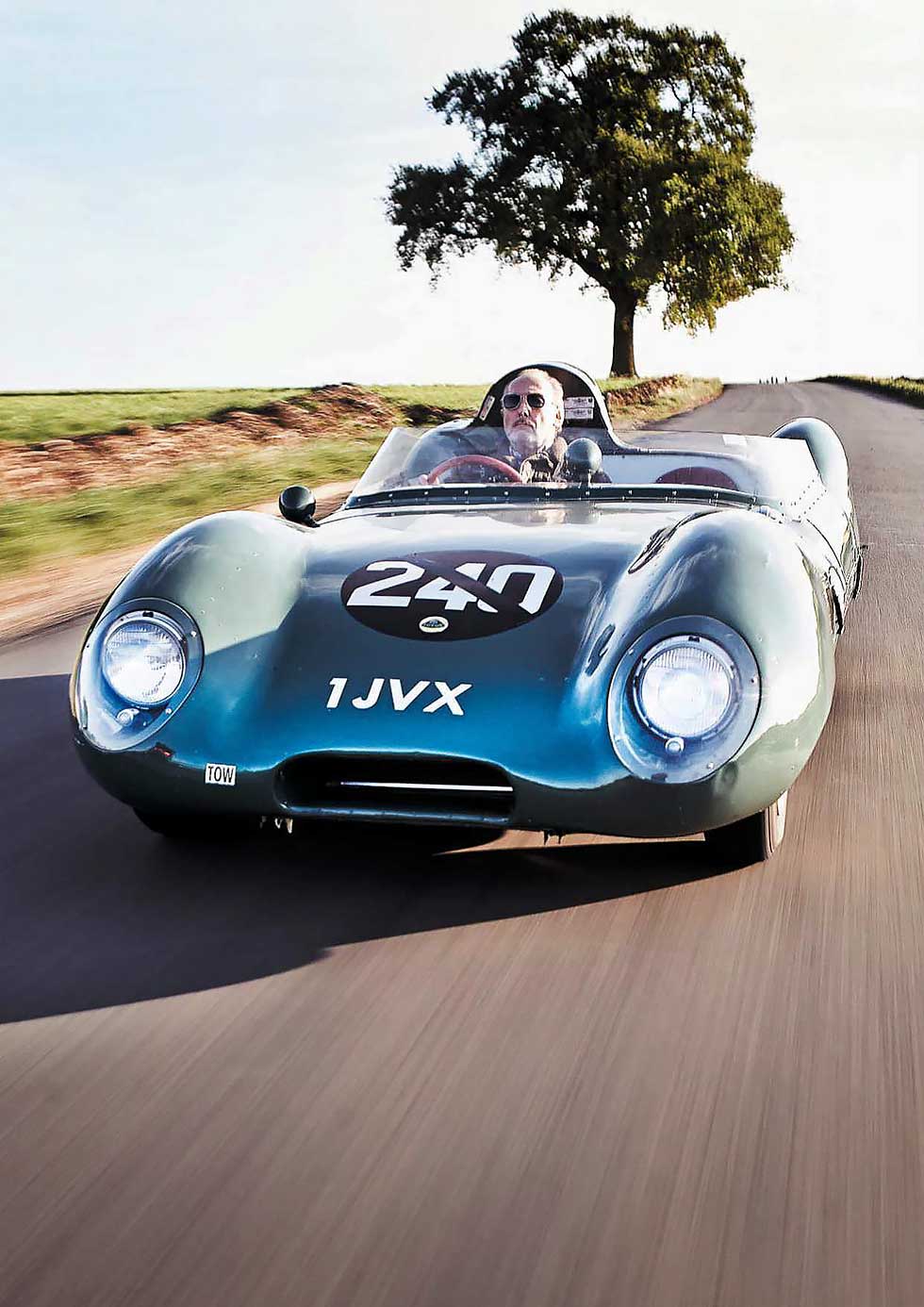
I’m exonerated by the lack of an alternative; both doors are rendered defunct by the fixed wraparound windscreen. I complete the move by placing one hand on the rear wing and the other on the transmission tunnel, lowering myself into this Fifties Lotus holy of holies. Back in 1957 this Series II Eleven would have run without seat belts, but these days it sports full Willans harnesses and I have to say that I’m grateful for them. Sixty years ago I’d also have been encircled by a single-seater screen with an alloy tonneau to my left, but today the Eleven is in its open cockpit Sports Car configuration with full-width screen.
At the BARC National meeting at Goodwood in September 1957, while Stacey was battling Innes Ireland’s Eleven team car for the lead in the Madgwick Cup, they jointly set a new record average of 88.71mph. But with two laps to go Ireland spun of, leaving his friend Stacey the winner. On the cooldown lap Stacey stopped out on the circuit and collected Ireland, who rode back to the paddock perched astride his head fairing.
Today, the typical Fifties-style bucket seat with wraparound sides gives excellent lateral support, all comfy and snug. I twist the ignition key, listen for the sound of the fuel pump tick, then press the starter. The 1098cc Coventry Climax FWA straight-four rotates a few times while the starter motor churns and then fires healthily. Sitting in an aluminium shell with an aluminium engine aggressively ticking over, everything clatters around me and the cockpit is an auditorium of noise. But it’s all the right sort of noise.
This car has always been registered for use on the public road since it was built in 1957. For that reason the exhaust is muffled by a silencer beneath the passenger door. Nevertheless, this is a thoroughbred racer so the silencer just about complies with the law. As owner Malcolm Ricketts puts it, ‘It’s just enough noise to keep the passenger quiet.’
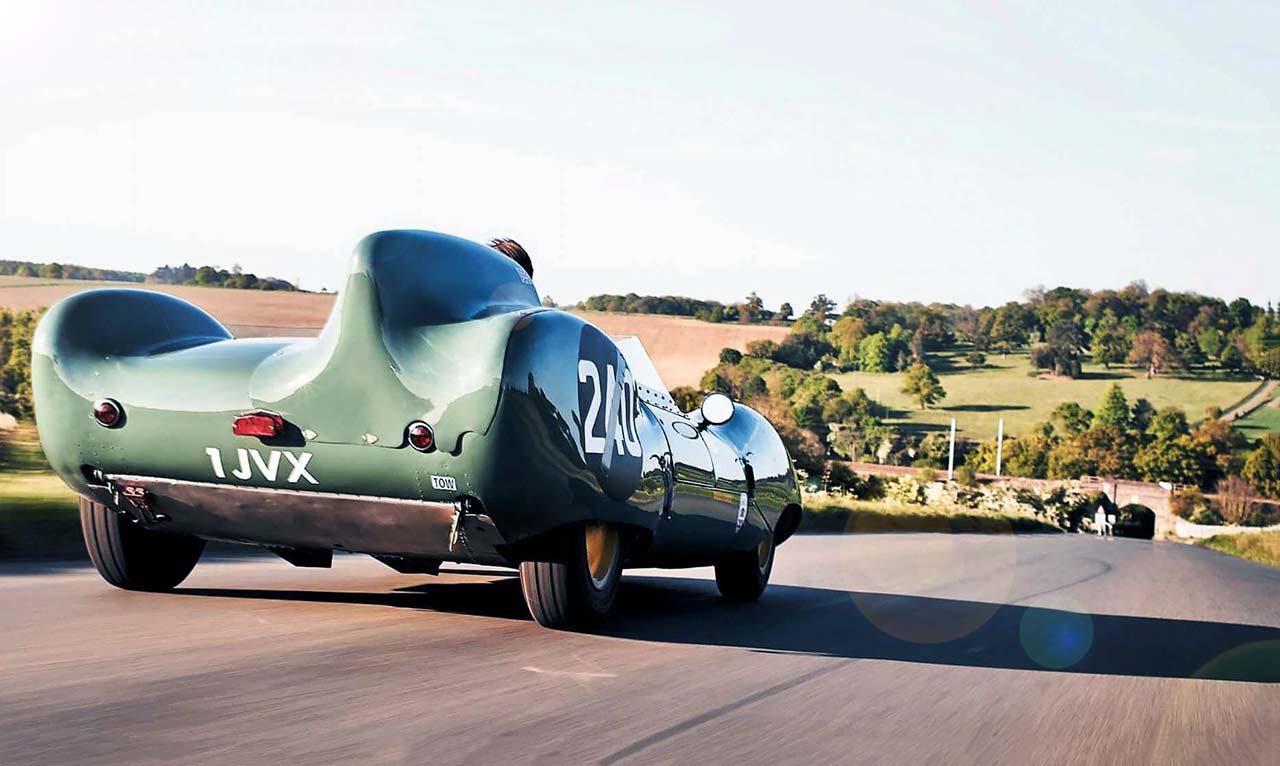
I’ll have no companions today. I adjust the mirror set on the scuttle in the middle of the crimson leather dashboard; there’s another on the wing to my right. The gear lever is raked back towards me and in easy reach; in period this would have incorporated a motorbike-style twist throttle to accomodate one-legged Stacey’s inability to heel-and-toe. I dip the clutch pedal; it’s heavy but not prohibitively so, although stirring the ’box into reverse isn’t the easiest exercise. I have to press down while guiding the spindly black gear lever to the left and back.
With the car now facing the right way, I push forward and left, seek out first cog. I put two thousand on the tachometer, let in the clutch and the Eleven pulls away cleanly. Even at parking speeds the steering is not in the least heavy, but then in a car weighing just 462kg on what seems today like rather skinny rubber, that’s to be expected. I guide the lever straight back into second, accelerate a little more, then at 4000rpm select third. At this speed the steering is noticeably light and delicate, while at the same time precise and direct. I feel everything through the thin-rimmed steering wheel and can guide the car with just a finger-thumb grip on the wheel – a virtue no doubt appreciated by Stacey, who would often have only had one free hand.
Whereas the earlier Series I Lotus Eleven employed a swing front axle, later Series II cars had an improved Formula Two-style set up, with double wishbones and co-axial springs over telescopic dampers. To reduce the unsprung weight at the rear, there was a de Dion tube located by radius arms – one being triangulated into an A-frame. Meanwhile, although the little Coventry Climax four-pot up front produces a modest 105bhp, the car’s excellent power-to-weight ratio means there’s a reasonable feeling of power on tap. The FWA is tolerant and far more flexible than I’d expected, although when I want any real performance I have to keep it up on the cam. Below 3000rpm there’s enough to maintain momentum and little else, but once I hit 4000 the engine note changes from a mumbling growl to a hardened rasp. When he was racing this car, owner Malcolm Ricketts would use 7000rpm as a limit but in the interests of preserving the original engine’s life, he now restricts himself to 6000rpm on the road and of course I’ve agreed to respect that limit too.
Coming up to a crossroads I try the all-round disc brakes; they bite well, are very light to use and haul speed of in an instant. I note a bit of backlash on the transmission when I slow up, but this is a racer and that’s to be expected. The Eleven is noisy and rattly but where any bit of metal touches another you’re bound to get some noise, especially when there are no rubber bushes to absorb road shocks. And as ergonomically inconsiderate as it is, the full-width wraparound windscreen works extremely well on the move, diverting the slipstream so I don’t need to wear racing goggles.
The handling balance is equally driver-friendly; pushed to the limit, the Eleven shows a tendency towards slight, easily remedied understeer. I apply full throttle as I pass through the apex, powering it through. Breakaway is gradual so the car never puts me in a situation where I require armfuls of opposite lock. Unlike more powerful cars such as ’Healeys or Jaguar D-types, the main focus is on maintaining momentum through the corners. The key to quickness is smoothness, so there’s none of this business of early or late turn-in to gain advantage of a particular corner, and then balancing it on opposite lock with the throttle on exit. The Eleven is so exquisitely balanced that it requires preciseness of line to extract its full potential.
Approaching a long sweeping corner, low and secure in my seat, I feel at one with the car, holding it in top. As it lows through the bend, I realise that I’m not consciously steering the car at all. Changes of direction seem to be made by my subconcious alone.
The Series II’s dynamic promise was discussed in a meeting called by Colin Chapman during the 1956 Earls Court motor show, involving his three leading sports cars drivers at the time – Alan Stacey, Keith Hall and Peter Lumsden. He informed them that the cars would be ready for the start of the 1957 season and that he’d like each of them to campaign one for the factory.
Since Chapman wanted to keep any start money and prize money they weren’t overly keen, but Stacey and Hall agreed to run Elevens as Lotus Team cars so long as they were registered in their names. The driver would source and fund his own engine and run the car, which Lotus would provide. Chapman would also pay the drivers a small retainer, plus £1 per mile for first place and 50p for second. Once Stacey took delivery of chassis 304, his mechanic installed the 1098cc Climax ready to do battle in the 1100cc classes – an impressive feat given that his mechanic only had one arm.
Stacey campaigned chassis 304 throughout the 1957 season before advertising it on 31 October 1957 as a ‘1957 works Le Mans Lotus 11 driven and maintained by Alan Stacey in 1957 for sale at £1175.’ A subsequent owner fitted it with red coupé-type bodywork with the intention of extending its competitive life by turning it into a GT car to run against Triumph TR3s and Turner GTs. However, it was never ever raced in this form, instead spending almost four decades languishing in a barn without even turning a wheel. Eventually, Ricketts came to hear about it.
‘I’ve always been a Lotus enthusiast,’ he says. ‘I went to Highgate School, which was quite near to the Lotus factory in Hornsey. I used to go there to have a nose around whenever I could, and dreamt that one day I would have my own Lotus. Colin Chapman was and remains my hero, yet strangely enough I never met him or even saw him when I went to the factory. However, I have come to know the family well over the last fifteen years.’ After a period of negotiation Ricketts bought the Eleven in October 2007. His first priority was replacing the curious coupé bodywork with the original rear end, which had fortunately been included as part of the sale. He then spent two years refurbishing the car back to how it was when Alan Stacey last raced it in 1957.
Today it retains matching numbers and, bar the removal of the hand-throttle gear lever by a previous owner, the Eleven is all-original other than one carefully thought-through exception. Since Ricketts intended to compete in the car, he decided to take the precaution of fitting a replacement aluminium front body section and place the original front clamshell in safe storage to preserve the car’s provenance. In the event of things, that proved to be a good decision. Apart from a few scratches on the wings from nudging markers at sprints, there’s a blemish on the nearside front wing. In the heat of battle during a three-hour race at Spa, Ricketts was braking so hard that a front tyre wore into the bodywork from underneath.
‘In 2013 I raced it at the Goodwood Revival and Bob Dance from Team Lotus came along to help in the pits. I could not have ever hoped for anything better. That was just wonderful.’
Ricketts retired from racing a couple of years ago but continues to use Lotus Eleven chassis 304 regularly. Sometimes he takes it out for a Sunday jaunt, sometimes down to the pub or out for a cross-country blast on a summer evening. ‘When Stacey owned the Eleven he would use it on the road all the time,’ he says. ‘I’m proud to have the opportunity to do the same.’
Tech and photos
TECHNICAL DATA FILE SPECIFICATIONS 1957 Lotus Eleven Series II Le Mans
Engine 1098cc four-cylinder Coventry Climax FWA, sohc, twin Weber 40DCOE carburettors
Max Power 105bhp @ 5250rpm / DIN
Max Torque 85lb ft @ 4800rpm / DIN
Transmission MGA four-speed manual, rear-wheel drive
Steering Rack and pinion
Suspension Front: double wishbone, coil springs and dampers, anti-roll bar. Rear: de Dion axle with twin radius rods, co-axial coil springs and dampers
Brakes Discs all round, inboard at rear
Weight 462kg (1019lb) dry
Performance Top speed: 130mph; 0-60mph: 9sec
Price new £1337
Classic Cars Price Guide £55k-£115k
“He was braking so hard that the tyre wore into the body from underneath”
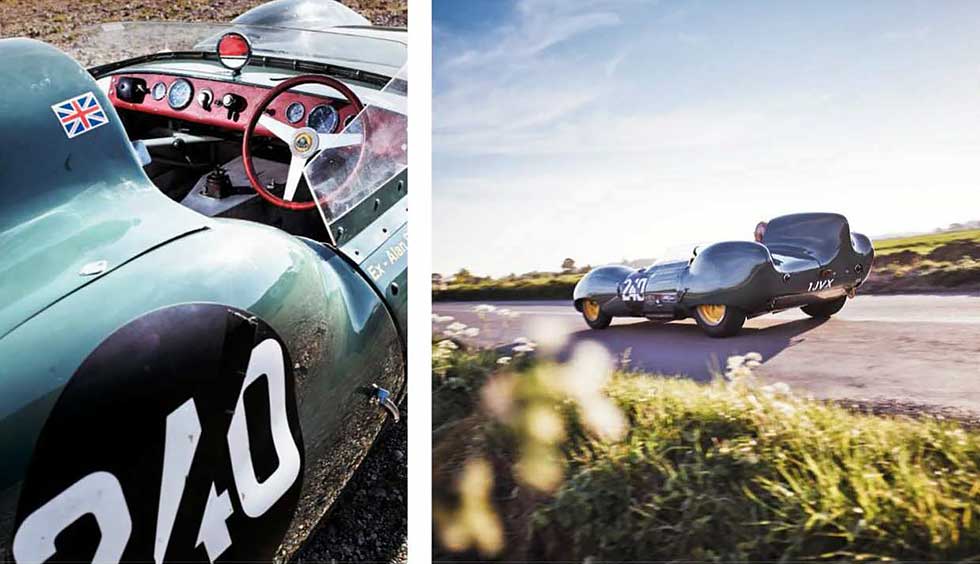
Owning a Lotus Eleven Series II
‘Running costs are almost zero,’ says owner Malcolm Ricketts. ‘It doesn’t use much petrol and the only maintenance required is to change the oil and filter every so often and grease the suspension and driveshaft nipples. ‘When I bought the car it hadn’t been used for 38 years.
It’d been removed from the track and some awful GT bodywork had been fitted, but from then on it was left unused. I spent £9000 having the transmission refurbished and £4000 on rebuilding the Coventry Climax engine. Then, in order to keep the very thin and vulnerable original front end safe, I spent £1000 on a fresh bonnet. Then there was £3000 on repainting and a bit more here and there on things like the seats. I don’t hammer it around – I always treat it with the respect it deserves and it has paid me back by staying quite trouble free.’
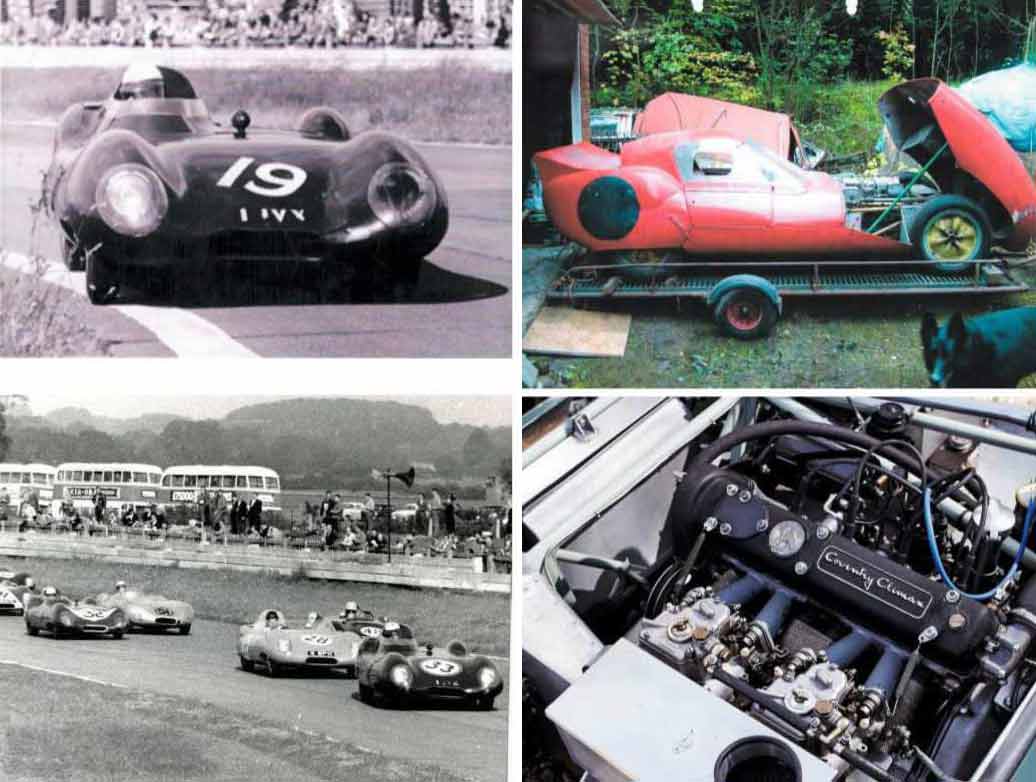
‘My intention was for it to be a road/race vehicle. I showed the car to an MoT inspector and he confirmed that no modifications were required at all – it was MoT’d and that was that. I didn’t even have to raise the suspension to clear road humps. All I did was replace the Dunlop Historic racing tyres with radials to make sure it complied with the MoT requirements. I think they were of a Fiat Uno actually! Since the radials are more compliant, the car benefits from a slightly improved ride. I was advised not to exceed 110mph on the radials which the car is easily capable of on a circuit, but on the road that would obviously be unwise. ‘The differential bolts can work loose so I have to keep an eye on them.
Otherwise, I just get in and drive. The main worry is the thin 16-gauge aluminium bodywork – you only have to look at it and you’ll put a dent in it. Sometimes people try to help me push it but I have to politely decline their help in case they push the wrong place. I once tripped over the front and had to throw myself into a Kung-Fu roll to avoid landing on top of it!’





